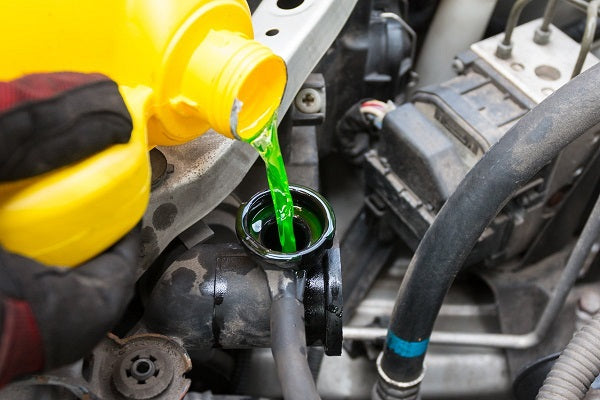
Check and Change the Coolant
Share
About coolant.
Coolant is a chemical compound that regulates temperature, so it makes the engine run at an optimal temperature, absorbing heat to prevent overheating or freezing of parts that are at risk of temperature.
It also works to lubricate the various metal parts and prevent corrosion, keeping the engine clean and in condition.

About maintaining the coolant.
Seeing the importance of refrigerant for your car, it needs to be checked and changed, as over time it loses its temperature regulation and lubrication properties. The cooling system should be drained, washed and filled from time to time to replenish the coolant to prevent rust and corrosion.
It is usually recommended to make changes every 30,000 miles or 48,000 kilometers, however this is not always the case, as the intervals change a lot depending on the vehicle, so it is recommended to consult the owner's manual first.
But, this is a job you can do from home because of how simple it is. Checking and changing your car's coolant can take an hour for how easy it is.
Tools Required.
- Hose removal tool
- Workshop manual for locating block drain plugs
- Drain tray and paper towels
- Keys and screwdrivers
Materials Required.
Refrigerant.
Check the coolant.
Refrigerant level checks are recommended at least every 600 miles or 1,000 kilometers. It's also a good idea to check the coolant in general, and more if you're making your change.
To do the review, the engine must be cold. Remove the tank cover from the refrigerant and examine it. If it looks rusty, has dirt, oil or looks like chocolate milk, it's time to take it to a mechanic. Yes and only if you can make the coolant change if it looks clean.
But before making the change, you should consult your vehicle owner's manual to check the type and amount of refrigerant you will need to make the change. You should also refer to the manual to locate all the important points where you will change your vehicle's coolant.

Steps for changing your coolant.
- Safety precautions before making the change: first of all, prevent any accidents. Keep pets and children away from where you'll make the coolant change. The engine must be turned off and cold for maintenance. Make the change in a flat place and make sure you have a drain tray where to leave the old coolant. You should also have paper towels due to a possible coolant spill; this is important as the coolant is extremely toxic, so it's best not to leave traces of it.
- Drain the coolant: First, lift the vehicle with the jack and support it with the jack supports. Then place the drain tray under the radiator and loosen the radiator bottom hose clamp with pliers to remove the hose. This will start emptying the coolant over the drain tray. Finally, you need to reconnect the lower radiator hose.
- Remove the engine drain plugs: locate and remove the engine drain plugs, allowing the remaining coolant to exit the radiator. To do this you have to use a key. Make sure that all coolant has been drained from the radiator and antifreeze tank. Put the plugs back on.
- Add the new antifreeze to the car: Pour the 50-50 mixture of antifreeze and distilled water into the radiator neck with a funnel. Look at the maximum and minimum markings on the tank, filling it until it gets a little closer to the maximum.
- Start the engine: start the engine and leave it idle for a while. Let the motor heat up are the radiator cover on. Turn on the car heating to the top. See if the coolant is circulating through the radiator. Put the radiator cover on and check the coolant tank level. Check the coolant protection level and it is complete.
Latest Recommendations.
You can take advantage of and clean the coolant tank while it is draining. To do this, you can simply use jet water from the hose. Rinse the tank thoroughly enough until the water comes out completely clean.
Do not purchase "universal" refrigerants, as they are generally incompatible with metal alloys and vehicle seals and seals, causing damage to the vehicle. Therefore it is recommended to pay attention to the manufacturer's warnings and buy the official refrigerant of the vehicle. With this you will have finished the change of coolant of your vehicle.
